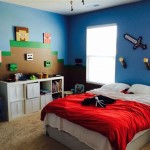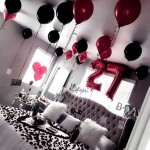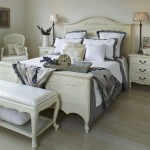How to Decorate Rustic Style Houses in Minecraft Bedrock Edition
Rustic architecture, characterized by its emphasis on natural materials, earthy tones, and a sense of timelessness, translates beautifully into Minecraft. In Minecraft Bedrock Edition, the availability of diverse blocks and decorative items allows for the creation of truly authentic and charming rustic homes. This article will provide a comprehensive guide to decorating rustic-style houses in Minecraft Bedrock, focusing on key elements and techniques to achieve a warm, inviting, and genuinely rustic aesthetic. Specific block choices and design considerations will be detailed to help players of all skill levels bring their rustic visions to life.
The foundation of any successful rustic build lies in understanding the core principles of the style. This involves carefully selecting materials that evoke a sense of age, texture, and connection to the natural world. Wood, stone, and terracotta are foundational elements, but incorporating details like exposed beams, rough-hewn textures, and handcrafted-looking furniture is essential for capturing the essence of rustic charm. The key is to avoid overly polished or manufactured-looking blocks and instead embrace the imperfections and irregularities that lend a building character.
Choosing the Right Blocks for a Rustic Aesthetic
The selection of blocks is paramount to achieving a believable and appealing rustic design. Minecraft Bedrock Edition offers a wide array of blocks suitable for this purpose, each contributing a unique texture and feel to the overall design. Consider the following block types when planning the interior and exterior of a rustic Minecraft home:
Wood Types: Oak, spruce, and dark oak are the most prevalent choices for rustic builds. Oak provides a versatile, neutral base, while spruce adds a touch of warmth and is ideal for floors and ceilings. Dark oak offers a richer, more aged appearance, suitable for highlights and detailing. Stripped logs, with their exposed wood grain, are particularly useful for creating exposed beams and support structures, both structurally and decoratively. The use of planks alongside logs in the walls adds to the visual texture and breaks up the monotony of a single block type. Consider experimenting with different orientations of logs to create intricate patterns or simulate the appearance of hand-cut timbers.
Stone and Brick: Stone bricks, cobblestone, and terracotta provide essential contrast to the wood elements. Stone bricks are ideal for foundations, chimneys, and accent walls, providing a sense of stability and permanence. Cobblestone, with its rough and uneven texture, works well for pathways, garden walls, and as a decorative element within the walls of the house itself. Terracotta, especially when unglazed, offers a warm, earthy tone that complements the wood and stone. Experiment with mixing different types of stone to create a layered effect, simulating the look of a building constructed over time with locally sourced materials.
Accents and Details: Consider incorporating less common blocks to add unique details and visual interest. Hay bales can be used to create a rustic garden or as a decorative element on the roof. Wool, particularly in neutral or earthy tones, can be used for rugs and wall hangings. Moss blocks add a touch of greenery and can be used to simulate overgrown areas or moss-covered walls. Copper, as it weathers and oxidizes, can add a touch of aged elegance to exterior details.
The importance of varying textures cannot be overstated. A blend of smooth and rough textures, such as polished stone next to rough-hewn logs, adds depth and visual interest to the design. Don’t be afraid to experiment with different combinations of blocks to find what works best for the specific project.
Interior Design Elements for a Rustic Home
Once the structure of the rustic house is complete, the interior design is where the space truly comes to life. Replicating the warmth and inviting atmosphere of a rustic home requires attention to detail and a thoughtful approach to furniture, lighting, and decorative elements. The goal is to create a space that feels lived-in, comfortable, and reflective of a simpler time.
Furniture and Furnishings: Avoid overly modern or polished furniture. Instead, focus on crafting furniture that looks handmade and sturdy. Wooden tables and chairs, crafted from logs and planks, are essential. Benches, crafted from slabs and logs, provide a comfortable seating option. Beds should be framed with wood, possibly using fence posts to create a headboard. Chests and barrels are practical storage solutions that also fit the rustic aesthetic. Consider using carpets and rugs crafted from wool to add warmth and soften the hard surfaces of the floor. Item frames with tools displayed add a realistic touch to the home.
Lighting: Lighting plays a crucial role in creating the ambiance of a rustic home. Avoid modern lighting styles, like glowstone hidden in walls. Instead, opt for more traditional light sources such as candles and lanterns. Campfires, strategically placed, offer a warm and inviting glow. Torches, while functional, can also be used decoratively, placed along walls or in corners to cast shadows and create a sense of depth. Utilize hanging lanterns made with iron bars and torches. Sea lanterns can be used sparingly to provide a subtle light source without compromising the rustic aesthetic.
Decorative Details: Small details can make a big difference in achieving a truly rustic feel. Flower pots with appropriate plants, such as wheat, saplings, or flowers in earthy tones, add a touch of nature. Paintings depicting landscapes or animals enhance the rustic theme. Bookshelves, filled with books, contribute to a sense of intellectualism and warmth. Armor stands, dressed in leather or iron armor, can simulate the presence of inhabitants. Smoker and blast furnace blocks used as decorative pieces in the kitchen area. The use of banners to create tapestries and wall hangings can add color and texture to the walls. Grindstones and smithing tables add to the visual narrative of the home
Arranging these elements thoughtfully is crucial. Avoid overcrowding the space with too many items. Instead, focus on creating focal points and allowing for ample open space. The goal is to create a space that feels comfortable and functional, demonstrating evidence of habitation and use.
Exterior Landscaping and Detailing
The exterior of a rustic Minecraft house sets the tone for the entire build. Just as important as the structure itself, the landscaping and detailing should complement the rustic aesthetic, creating a seamless transition between the house and its surroundings. A well-landscaped exterior enhances the overall appeal of the build and adds to its sense of realism and charm.
Gardens and Vegetation: A rustic garden should appear natural and slightly overgrown, rather than perfectly manicured. Incorporate a variety of plants, including flowers, bushes, and trees. Wheat fields and vegetable gardens contribute to a sense of self-sufficiency. Consider adding a small orchard with fruit-bearing trees. Utilize fences and walls made from cobblestone or wood to define garden spaces. Add details such as scarecrows, made from hay bales and jack o'lanterns, to enhance the rustic charm. Streams and ponds with strategically placed lily pads enhance the natural feel of the location.
Pathways and Walkways: Pathways should be constructed from natural materials such as cobblestone, gravel, or dirt paths. Avoid perfectly straight lines and instead create meandering paths that invite exploration. Incorporate stepping stones made from slabs or stone blocks. Add details such as fallen leaves, using green dye on leaves or moss carpets, to enhance the natural look. Ensure that the pathways blend seamlessly with the surrounding landscape.
Exterior Details: Small details can make a big difference in enhancing the rustic appearance of the exterior. Add a well, crafted from stone and wood, to provide a water source. Utilize barrels and crates to simulate storage areas. Include a stack of firewood near the entrance. Add a chimney, crafted from stone bricks, to the roof. Incorporate elements such as hanging flower baskets and window boxes to add color and life. Place minecart with chests into the scene, as though they were forgotten there for sometime. Adding custom trees using bone meal can further enhance the detail of the environment. Consider adding a small animal pen with chickens, pigs, or sheep to create a sense of farm life. A small stable with horses housed inside can add a sense of functionality to the build.
Prioritize creating a sense of integration between the house and its surroundings. The landscaping should feel like a natural extension of the environment, enhancing the rustic charm of the build. By paying attention to these details, one can create a truly immersive and believable rustic Minecraft experience.

Minecraft How To Build A Farmhouse Tutorial

Minecraft Large Wooden Cabin Tutorial

Minecraft Big Cottage House Tutorial

Minecraft Large Wooden House Tutorial Survival Design

The Best Minecraft House Ideas For 1 21 6

Cottage Rustico Di O In Minecraft

Minecraft Aesthetic Cottagecore House Tutorial Cottage Mizuno S 16 Craft Resource Pack

Best Minecraft House Ideas For Chase The Skies Update Dexerto

Simple Oak Survival House Minecraft Tutorial 69

Best Minecraft House Ideas For Chase The Skies Update Dexerto
Related Posts







